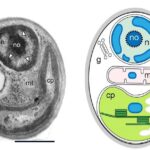脳内セロトニントランスポーターが増加したことを発見 Researchers find serotonin transporter in the brain increased
2023-01-27 マックス・プランク研究所

The scientists took images of the womens’ brain with positron emission tomography (PET) at different cycle times.
© MPI CBS
◆月経前症候群(PMS)は、今や多くの人が知っている言葉ですが、全女性の約50%が月経開始の数日前にこの症状を経験するといわれています。月経前不快気分障害(PMDD)と呼ばれる重症のものは、妊娠可能な年齢の女性の8%が罹患し、睡眠障害や乳房痛などの身体的症状に加えて、抑うつ、自己コントロール不能、イライラ、攻撃性、集中力低下などの精神・情緒的症状も伴います。その結果、PMDDを発症した女性の多くは、私生活や仕事に支障をきたすようになります。
◆PMDDの主な原因は、エストロゲンとプロゲステロンという性ホルモンの濃度が生理周期の後半と排卵後に大きく変動するため、その正常な変動に対して過敏に反応することにあると考えられています。「エストロゲンとプロゲステロンは、セロトニン濃度に影響を与え、それが直接的に気分に影響を与えることが分かっています。PMDDの患者さんでは、こうした生理周期の変化に対する脳の反応に異常があるようです」と、研究リーダーのJulia Sacherは説明する。そこで彼女は、ライプチヒ大学病院核医学診療所の同僚とともに、PMDD患者の脳における神経伝達物質セロトニンの役割について詳しく調べた。
◆「30人の女性患者と29人の健康な研究参加者を数回の月経周期にわたって調べ、異なる周期でPET(ポジトロン断層法)による脳の画像を撮影しました。その結果、月経開始の少し前に、脳内のセロトニントランスポーターが増加し、その結果、この神経伝達物質のシナプスでの損失が促進され、このことが患児の女性における感情症状を説明できることを発見しました。この発見は驚くべきものです。これまで、セロトニントランスポーターの密度は2週間という短い時間では変化しないと考えられていたからです。通常、これは個人形質と考えられ、10年という期間ではわずかな変化しかないと想定されます。”
◆このようなセロトニントランスポーターの短期的な変化は、PMDDの症状に対して周期的な治療を行う根拠となるものです。患者は、選択的セロトニン再取り込み阻害剤(SSRI)を、月経周期に合わせて数日間だけ特別に服用することができる。抗うつ薬の摂取に関する一般的な推奨は、より長い期間の服用を前提としています。
<関連情報>
- https://www.mpg.de/19818475/0127-nepf-not-just-mood-swings-but-premenstrual-depression-serotonin-transporter-in-the-brain-increased-149575-x
- https://www.biologicalpsychiatryjournal.com/article/S0006-3223(23)00005-7/fulltext
月経前不快気分障害患者における月経周期に伴うセロトニントランスポーター結合の増加:ケースコントロールによる神経受容体リガンドPETイメージング経時的研究 Increase in serotonin transporter binding in patients with premenstrual dysphoric disorder across the menstrual cycle: a case-control longitudinal neuroreceptor ligand PET imaging study
Julia Sacher,Rachel G. Zsido,Claudia Barth,Franziska Zientek,Michael Rullmann,Julia Luthardt,Marianne Patt,Georg A. Becker,Pablo Rusjan,A. Veronica Witte,Ralf Regenthal,Abhay Koushik,Juergen Kratzsch,Beate Decker,Petra Jogschies,Arno Villringer,Swen Hesse ,Osama Sabri
Biological Psychology Published:January 18, 2023
DOI:https://doi.org/10.1016/j.biopsych.2022.12.023
Abstract
Background
Premenstrual dysphoric disorder (PMDD) disrupts the lives of millions of people each month. The timing of symptoms suggests that hormonal fluctuations play a role in the pathogenesis. Here, we test whether a heightened sensitivity of the serotonin system to menstrual cycle phase underlies PMDD, assessing the relationship of serotonin transporter (5-HTT) changes with symptom severity across the menstrual cycle.
Methods
In this longitudinal case-control study, we acquired 118 [11C]DASB positron emission tomography scans, measuring 5-HTT non-displaceable binding potential (BPND) in 30 patients with PMDD and 29 controls during two menstrual cycle phases (periovulatory, premenstrually). The primary outcome was midbrain and prefrontal cortex 5-HTT BPND. We tested whether BPND changes correlated with depressed mood.
Results
Linear mixed-effects modeling (significant group*time*region interaction) showed a mean increase of 18 percent in midbrain 5-HTT BPND (mean±SD, periovulatory=1.64±0.40 premenstrual =1.93 ±0.40, delta = 0.29 ±0.47, t(29) = -3.43, p=0.0002) in PMDD, whereas controls displayed a mean 10 percent decrease in midbrain 5-HTT BPND (periovulatory = 1.65 ±0.24 > premenstrual = 1.49 ±0.41, delta = -0.17 ±0.33, t(28) = -2.73, p=0.01). In patients, increased midbrain 5-HTT BPND correlated with depressive symptom severity (R2 = 0.41, p<0.0015) across the menstrual cycle.
Conclusions
These data suggest cycle-specific dynamics with increased central serotonergic uptake followed by extracellular serotonin loss underlying the premenstrual onset of depressed mood in patients. These neurochemical findings argue for systematic testing of presymptom onset-dosing of selective serotonin reuptake inhibitors or non-pharmacological strategies to augment extracellular serotonin in PMDD.


